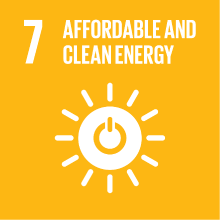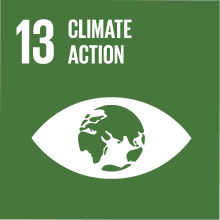AESTHETICS, POLITICS AND ENVIRONMENTAL SUSTAINABILITY
- Academic year
- 2022/2023 Syllabus of previous years
- Official course title
- AESTHETICS, POLITICS AND ENVIRONMENTAL SUSTAINABILITY
- Course code
- LT9042 (AF:387031 AR:202014)
- Teaching language
- English
- Modality
- On campus classes
- ECTS credits
- 6
- Degree level
- Bachelor's Degree Programme
- Academic Discipline
- M-FIL/04
- Period
- 2nd Term
- Course year
- 3
- Moodle
- Go to Moodle page
Contribution of the course to the overall degree programme goals
Aesthetics is a branch of philosophy that studies the kind of experience we have when we find something beautiful, sublime, tragic, comic, and so on (the extension of the realm of aesthetic experience is itself a matter of discussion). Aesthetics also studies the objects of those experiences: both natural objects and artworks figure prominently among them. The aesthetic value we find in some natural objects (beautiful landscapes, for instance) can motivate us to take care of them, also by enforcing specific policies. Aesthetic interactions with the environment (gardening, for instance) can be good examples of sustainable attitudes that we might want to implement. Finally, artworks that are embedded in nature and/or raise issues concerning the environment abound in contemporary artistic production and may offer us valuable insights, at a time when we are seeking to rethink our relationship with the environment.
Aesthetics, politics, and environmental sustainability are thus tied to each other: by focusing on those ties, this introductory course offers some tools to analyze how philosophical, political, and economic issues can intermingle and identify cases where this phenomenon deserves our attention.
Expected learning outcomes
1. Textual understanding and knowledge:
● Students shall master the basic terminology of aesthetics and understand the texts employing it;
● Students shall know the main arguments in support of the theories on the aesthetic experience of nature and artworks illustrated by the teacher during classes;
● Students shall know the main arguments in support of the theories on the political value of works of art illustrated by the teacher during classes;
● Students shall know the main arguments in support of the theories on the role of aesthetics in addressing issues related to environmental sustainability illustrated by the teacher during classes.
2. Ability to apply knowledge and understanding:
● Students shall be able to use the terminology of aesthetics correctly while communicating and applying the knowledge acquired through the course;
● Students shall know how to identify the main arguments presented in contemporary philosophical texts;
● Students shall have strengthened their argumentative and logical reasoning skills, as demonstrated by showing that they are able to apply philosophical arguments to the analysis of case studies.
3. Judgment skills
● Students shall know how to formulate and argue for the hypotheses illustrated in the literature, and they shall develop the ability to formulate simple, alternative hypotheses.
4. Communication skills
● Students shall know how to write short texts in defense of a philosophical thesis;
● Students shall know how to defend orally the arguments put forward in their texts;
● Students shall know how to illustrate various philosophical theories during an oral discussion;
● Students shall know how to interact with peers and the teacher, in a critical and respectful way, both in presence and on the virtual classroom forum.
5. Learning skills
● Students shall know how to take notes;
● Students shall know how to critically consult the reference texts and the bibliography contained therein;
● Students shall know how to plan and write a short philosophical text.
Pre-requirements
Contents
In the second place, we shall look into philosophical discussions of artworks embedded in nature and/or concerned with the environment, with special attention to their role in political discourse.
In the third place, we shall consider how and in how far aesthetic experiences of nature might play a role in tackling issues of ecological sustainability.
Referral texts
Students are required to study from some chapters from the following volumes – at the beginning of the course, the specific chapters to be read shall be announced:
Emily Brady, Isis Brook and Jonathan Prior (2018), Between Nature and Culture: The Aesthetics of Modified Environments, Rowman & Littledfield.
Allen Carlson and Sheila Lintott (eds.) (2008), Nature, Aesthetics and Environmentalism: from Beauty to Duty, Columbia University Press.
Darren Hudson Hick (2017), Introducing Aesthetics and the Philosophy of Art, 2nd edition, Bloomsbury.
Papers
Students are required to study from the following papers:
Allen Carlson (2020), “Environmental Aesthetics”, The Stanford Encyclopedia of Philosophy (Winter 2020 Edition), Edward N. Zalta (ed.), URL = <https://plato.stanford.edu/archives/win2020/entries/environmental-aesthetics/> ;.
Theodore Graycick (2022), “The Mississipi River in the Land of 10.000 Lakes”, https://aestheticsforbirds.com/2022/04/06/the-mississippi-river-in-the-land-of-10000-lakes/#more-15732 (originally published in Bloomsbury Contemporary Aesthetics: https://www.bloomsburyphilosophylibrary.com/about-bloomsbury-contemporary-aesthetics )
Vid Simoniti (2021), “Art as Political Discourse”, British Journal of Aesthetics, 61(4): 559-574.
Kendall Walton (1970), “Categories of Art”, Philosophical Review 79(3): 334-367.
Some of the papers collected in "The Journal of Aesthetics and Art Criticism", Volume 76, Issue 4, Special Issue: The Good, the Beautiful, the Green: Environmentalism and Aesthetics - at the beginning of the course, the specific chapters to be read shall be announced.
Assessment methods
Students are required to:
1) Orally discuss the texts included in the course’s mandatory reading list;
2) Write a 1000 words paper, concerning a specific topic tackled during the course, and discuss it orally.
Type of exam
Teaching methods
Further information
Students who cannot attend the lectures are warmly invited to contact the teacher by sending an email to: elisa.caldarola@unive.it
Accessibility, Disability and Inclusion
Ca' Foscari abides by Italian Law (Law 17/1999; Law 170/2010) regarding support services and accommodation available to students with disabilities. This includes students with mobility, visual, hearing and other disabilities (Law 17/1999), and specific learning impairments (Law 170/2010). If you have a disability or impairment that requires accommodations (i.e., alternate testing, readers, note takers or interpreters) please contact the Disability and Accessibility Offices at your earliest convenience: inclusione@unive.it.
Website: www.unive.it/inclusione
2030 Agenda for Sustainable Development Goals
This subject deals with topics related to the macro-area "Climate change and energy" and contributes to the achievement of one or more goals of U. N. Agenda for Sustainable Development


